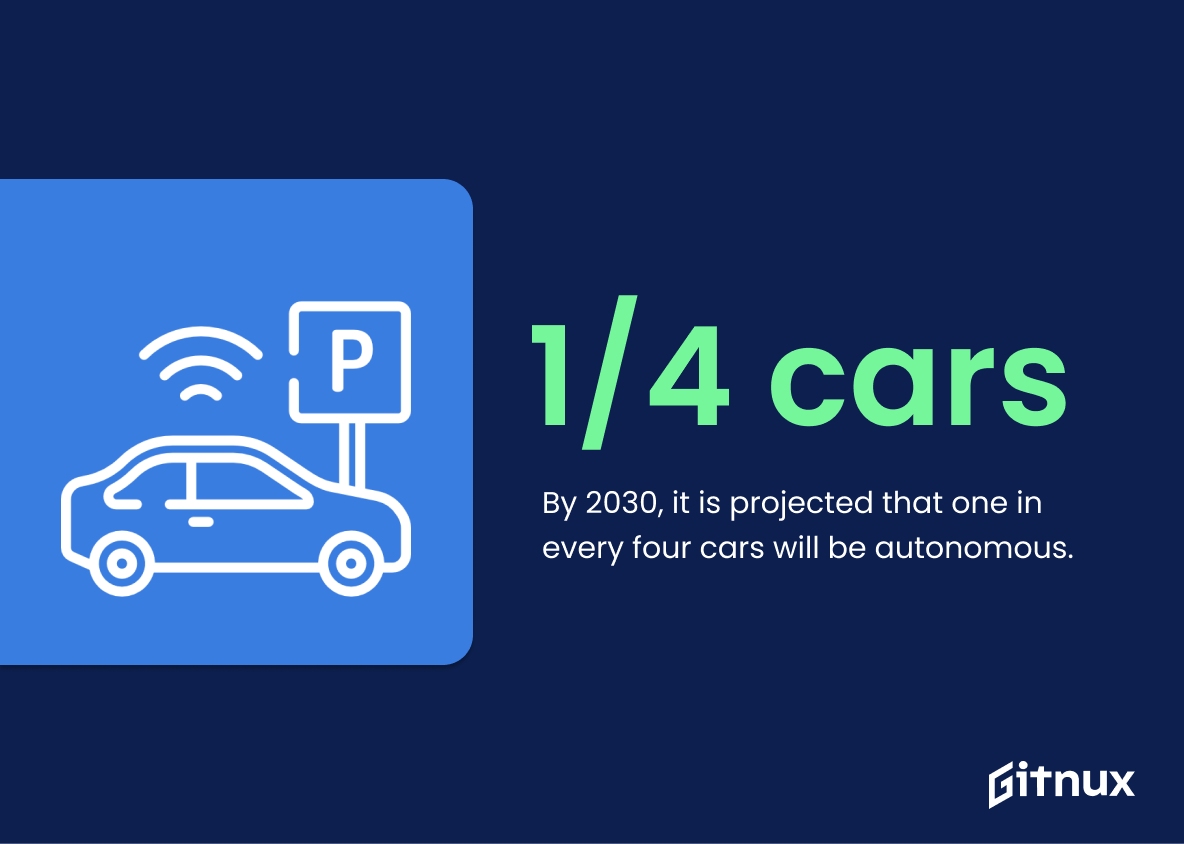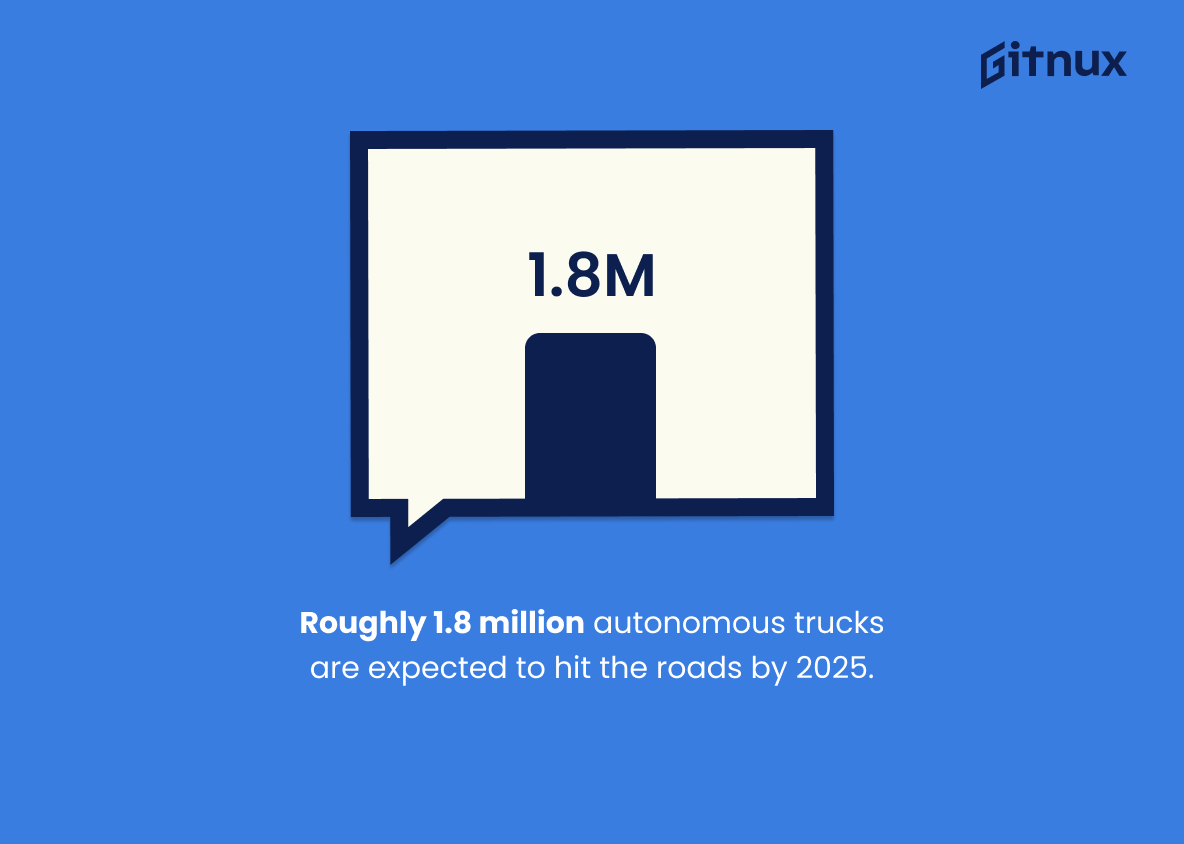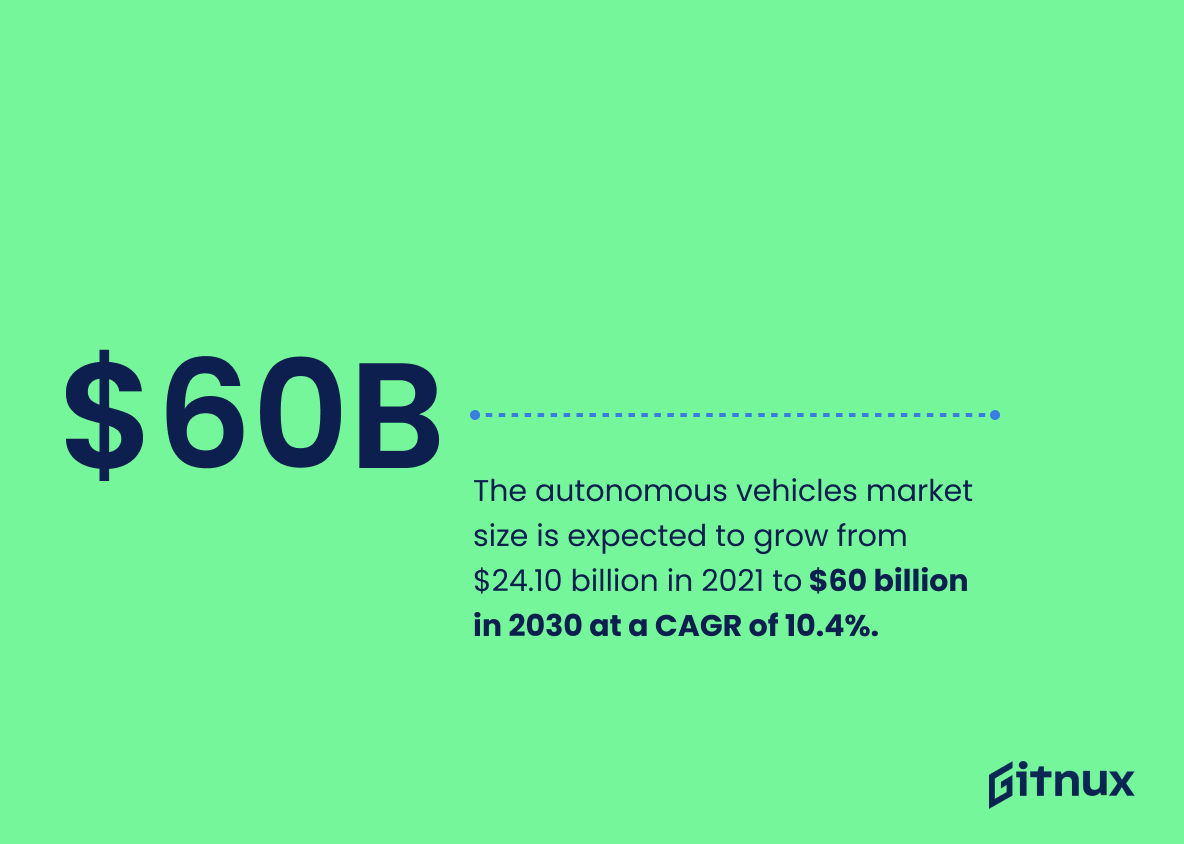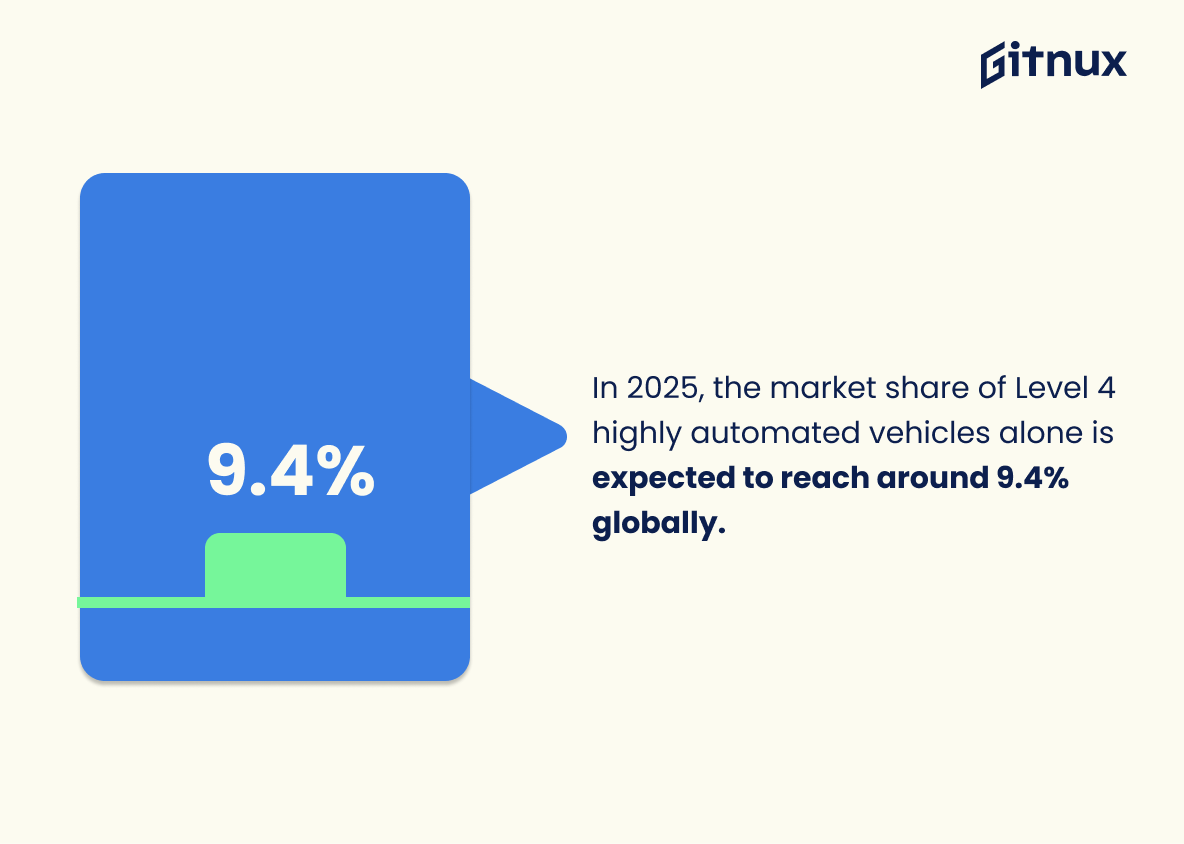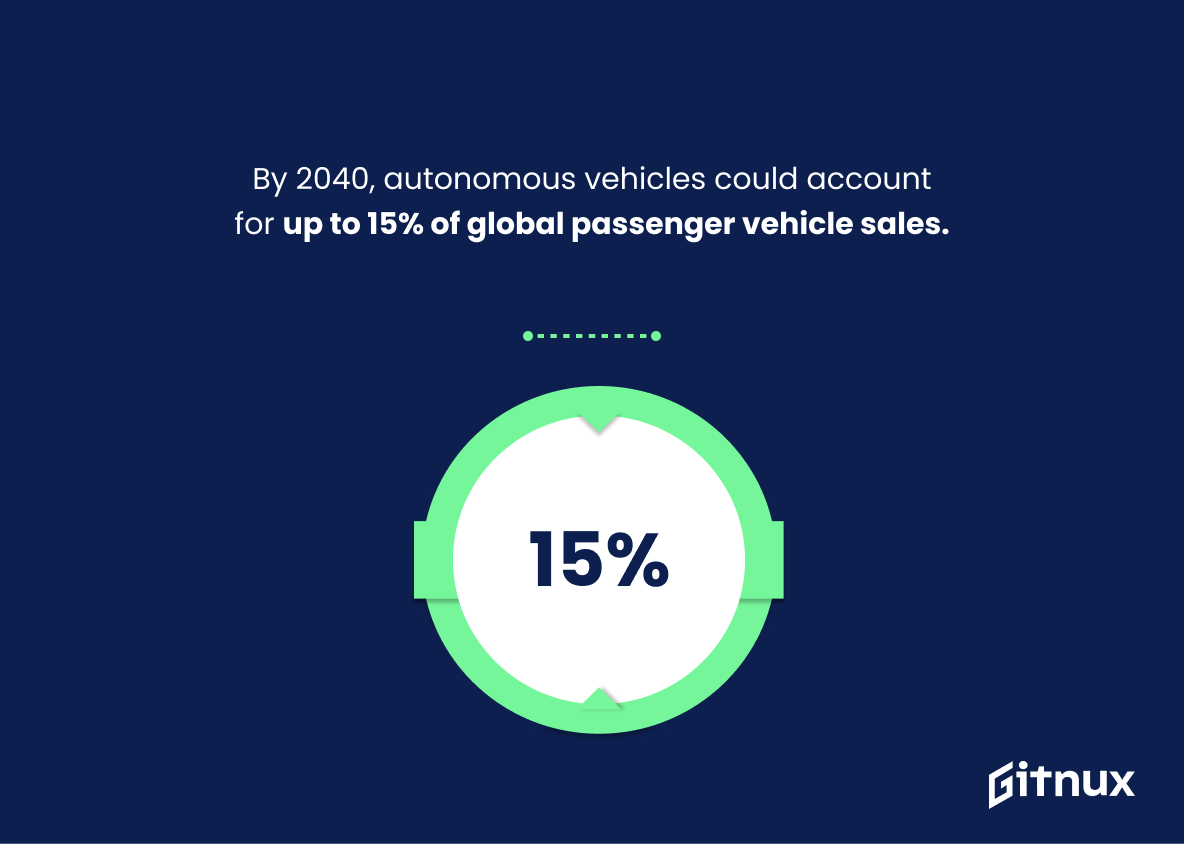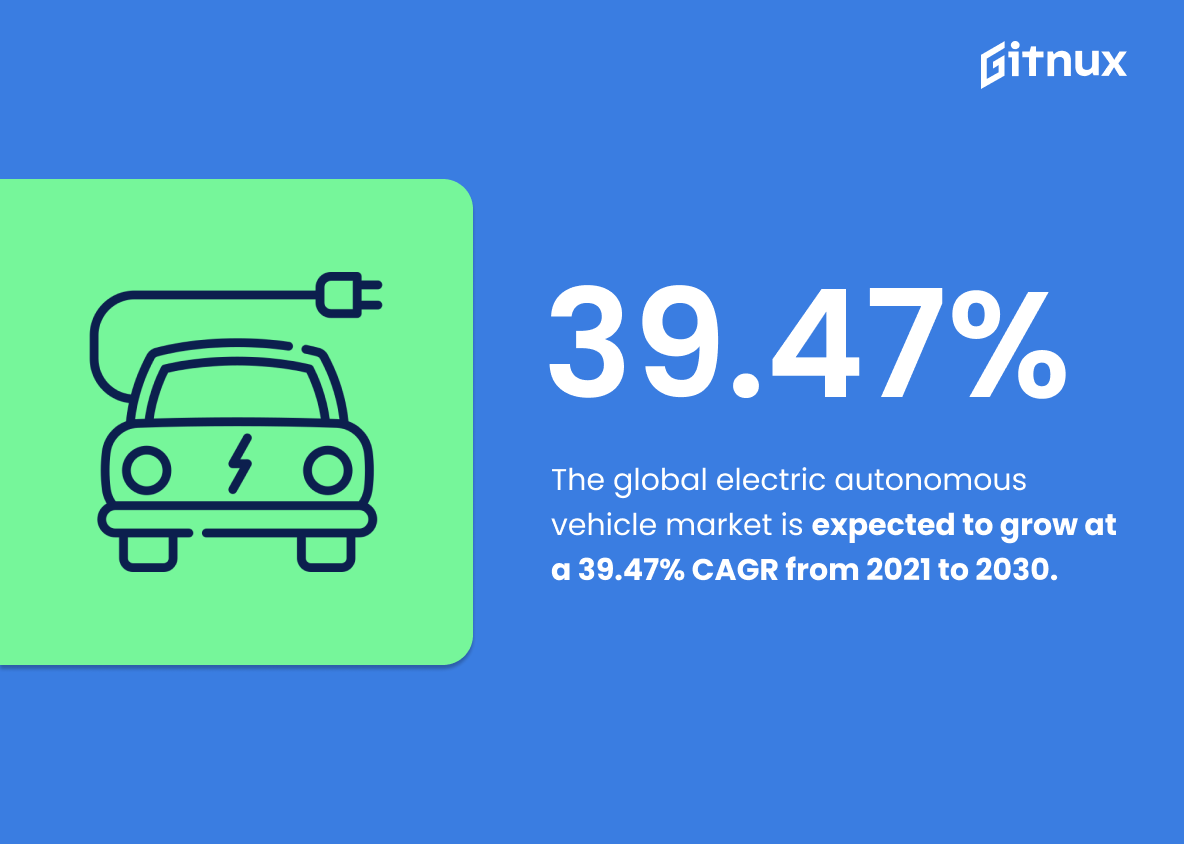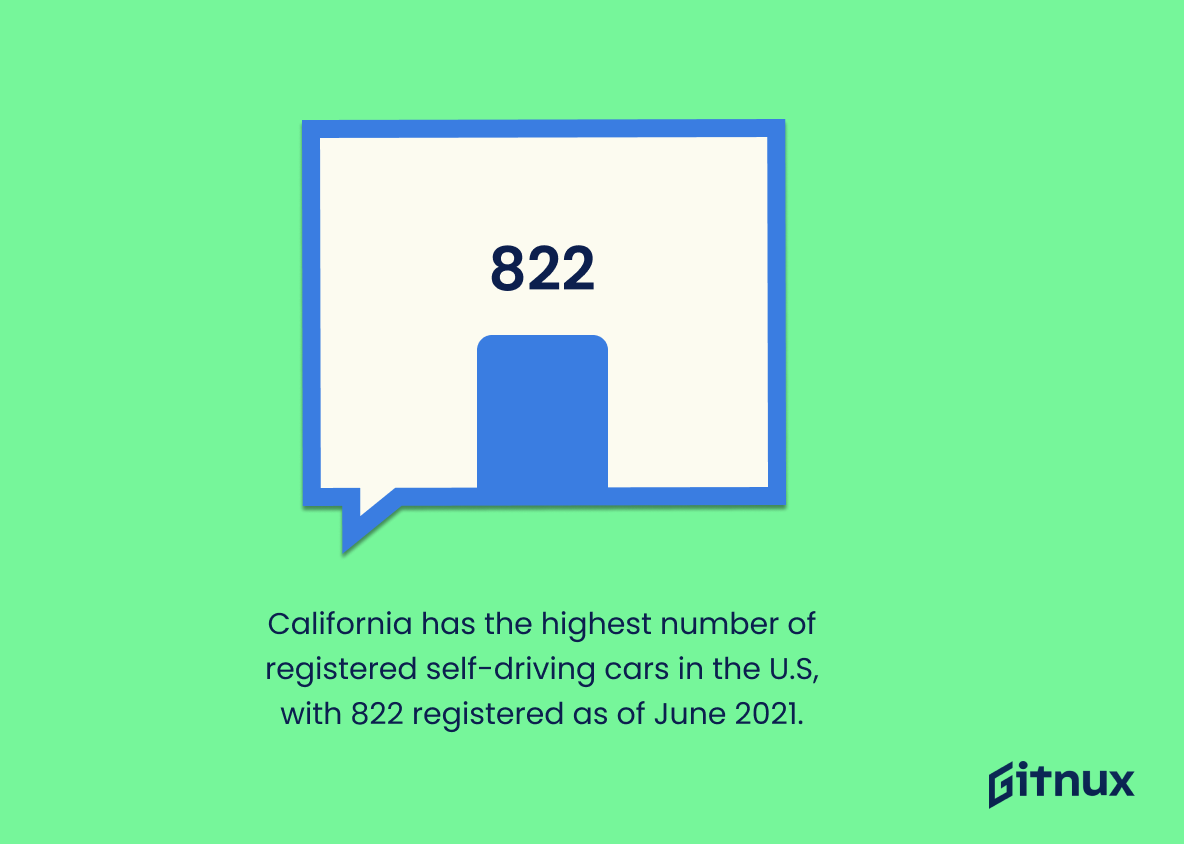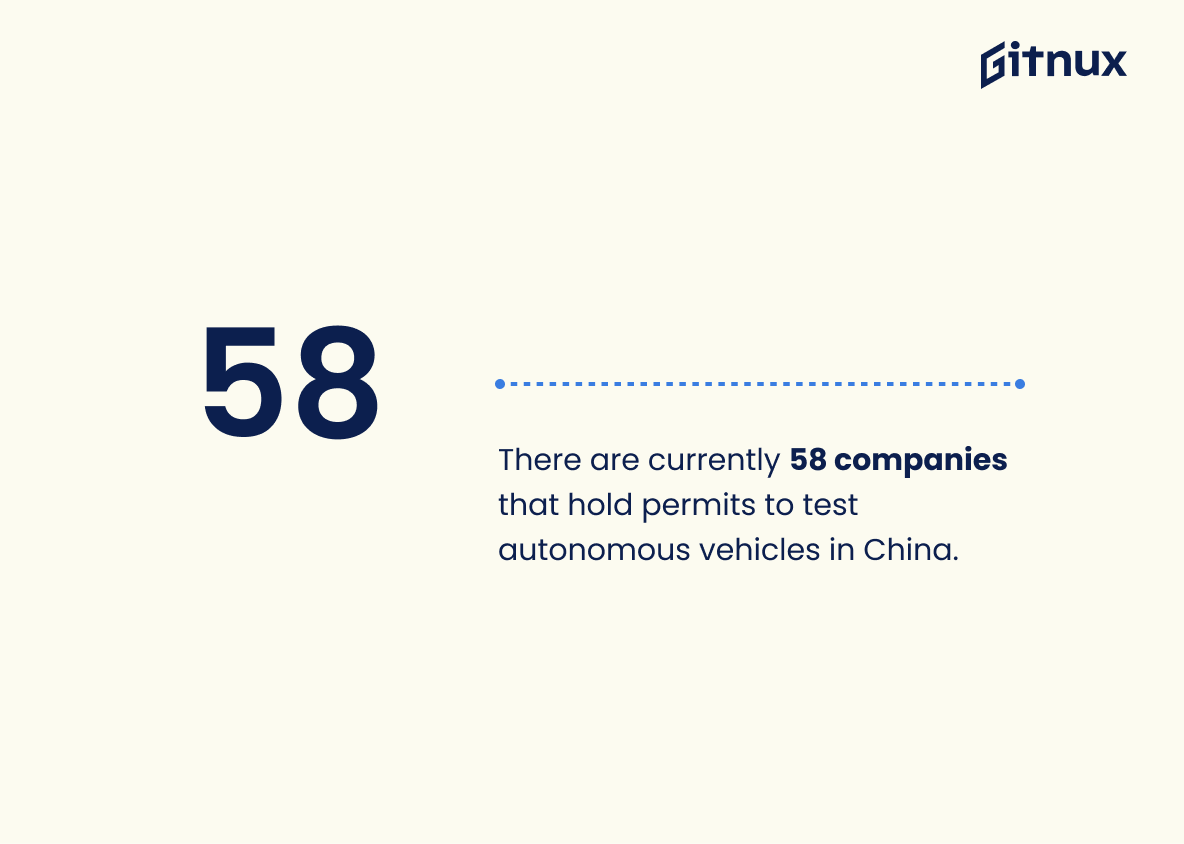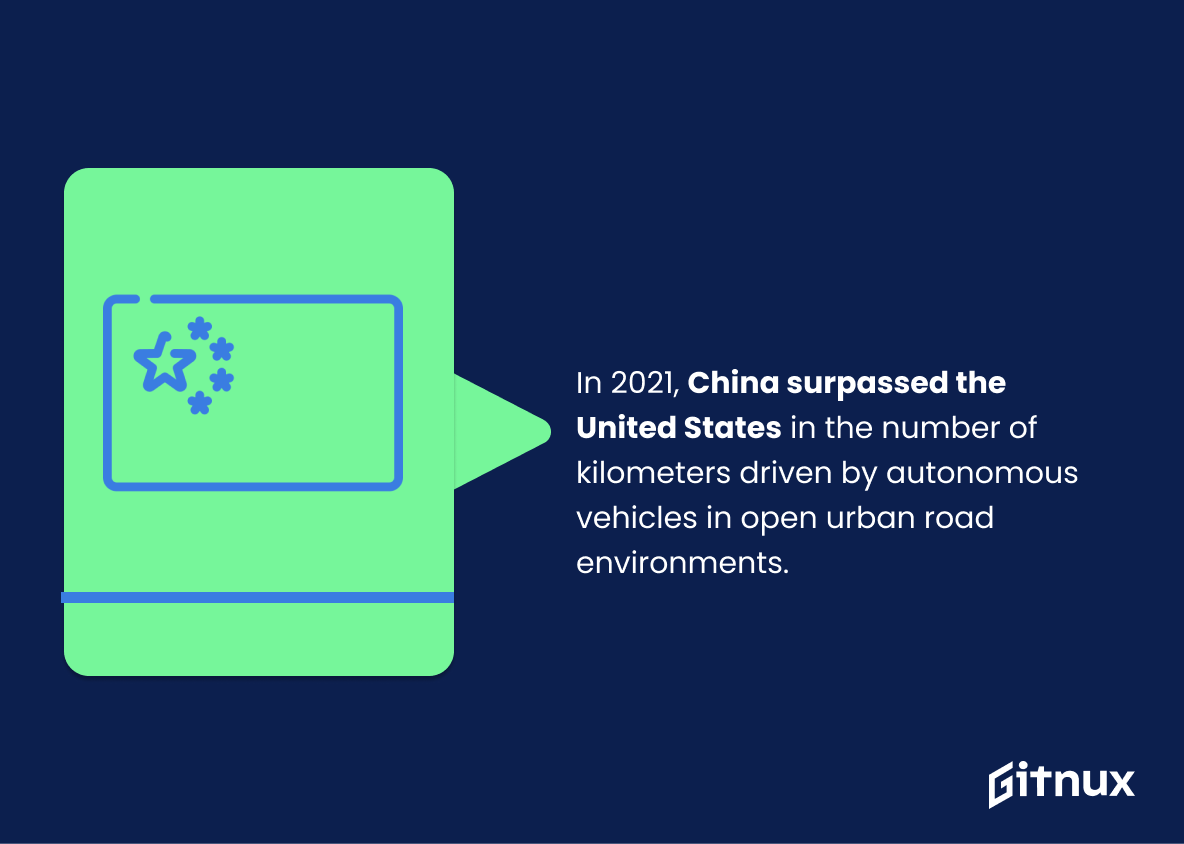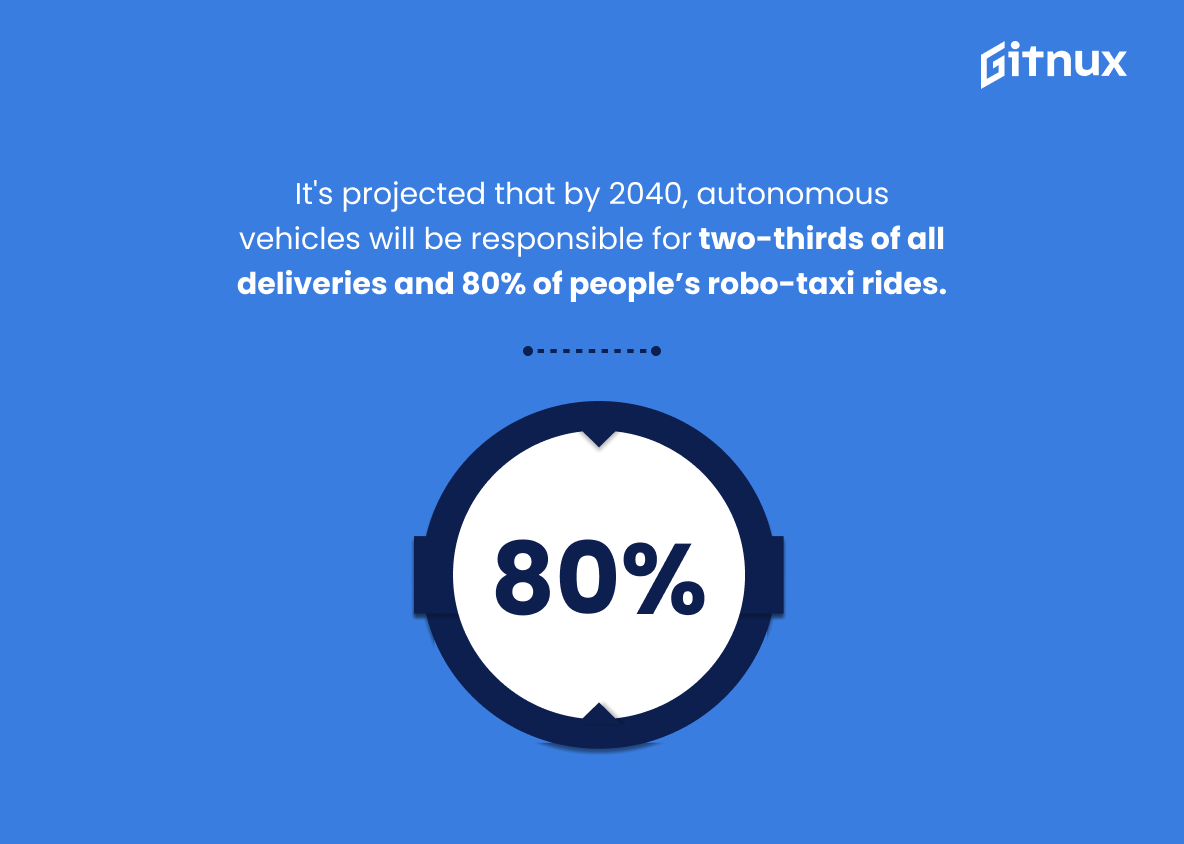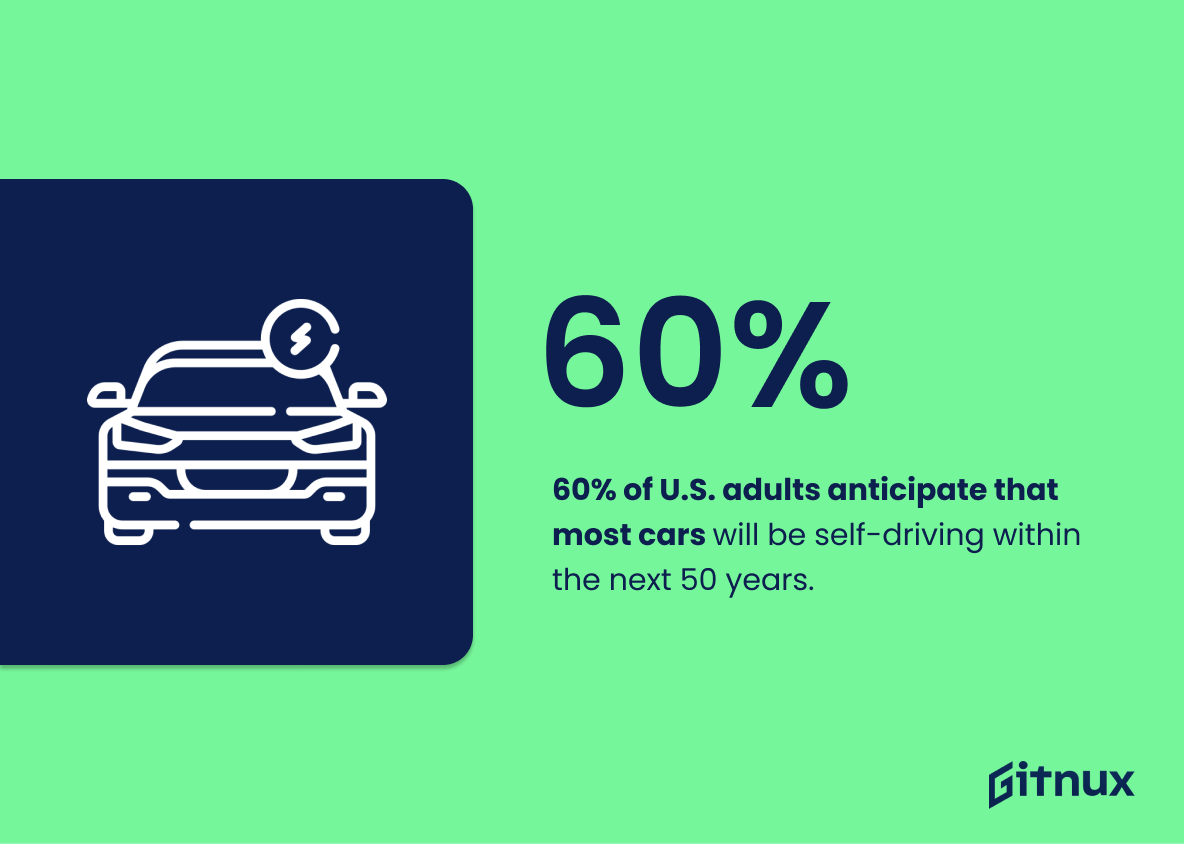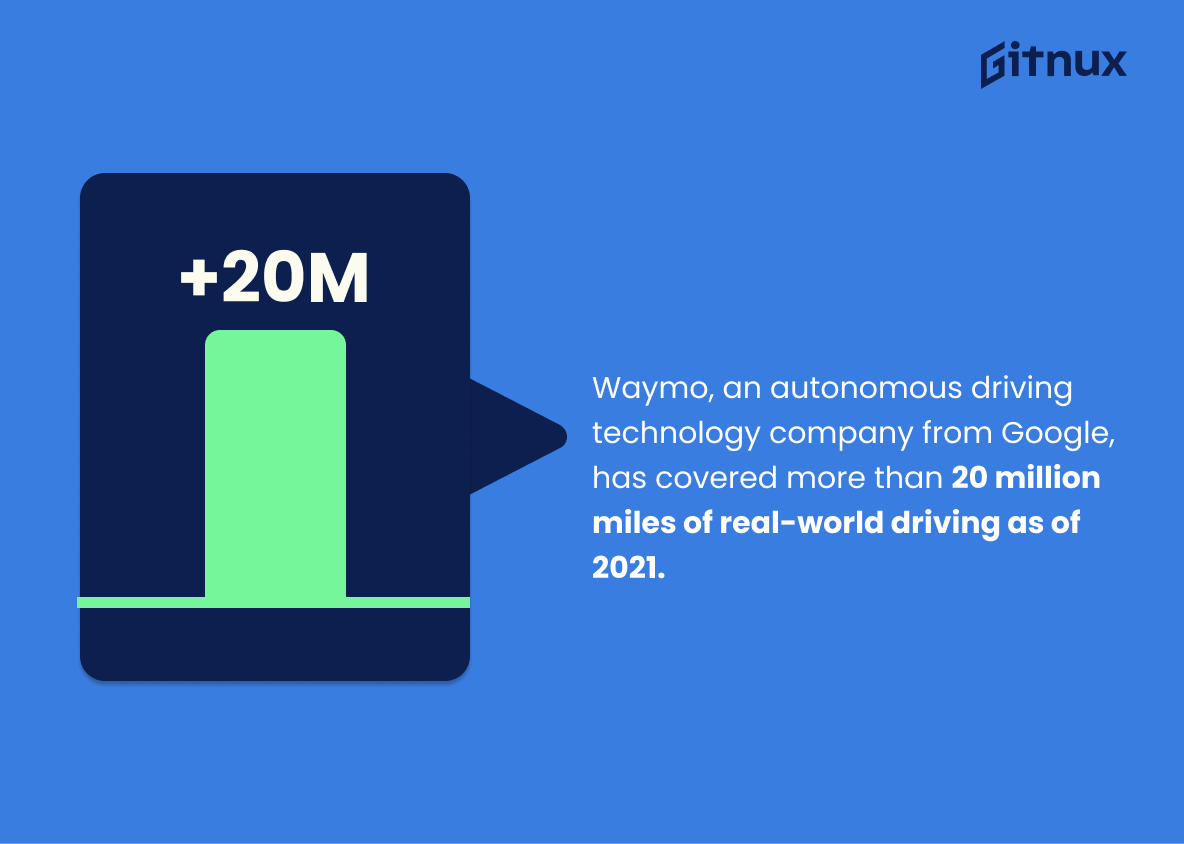Hop on board as we navigate the fascinating terrain of the Autonomous Vehicles Industry, a transformative domain on the brink of revolutionizing our interactions with transportation. In this blog post, we delve deeper into compelling statistics that illuminate the current state, growth trajectory, and potential implications of this emerging industry.
Uncover how this breakthrough technology is set to redefine mobility and significantly alter the dynamics of road safety, environmental sustainability, and urban planning. Immerse yourself in a journey marked by ingenuity and innovation, as we venture into the heart of the Autonomous Vehicles Industry, where the future of transportation is being actively re-imagined.
The Latest Autonomous Vehicles Industry Statistics Unveiled
By 2030, it is projected that one in every four cars will be autonomous.
Peering into the crystal ball of the future can reveal astonishing insights about our day-to-day transportation. The fact that by 2030, foresights predict a quarter of our cars will essentially pilot themselves is a testament to the speed and ambition at which the autonomous vehicle industry is progressing.
This is not just a casual prediction; rather, it’s a thunderous proclamation that underscores several noteworthy undercurrents for a blog about Autonomous Vehicles Industry Statistics. Firstly, it underscores the exponential growth and adoption trend within the autonomous vehicle market, signaling potential investment opportunities for stakeholders.
Secondly, it reiterates the mounting trust and acceptance that societies worldwide are granting towards this technology. It hints towards the transformative potential of autonomous vehicles and their role in reshaping urban landscapes, mobility patterns, and traffic management.
Last but not least, this statistic signifies prospective challenges and roadblocks in the path of fully autonomous vehicles – such as changing regulations, legal liabilities, security concerns, and ethical considerations.
All in all, the forecast of every fourth car running autopilot by 2030 paints a thrilling picture of the industry’s future. One that is riding high on the wave of technological advancements, yet one that needs to navigate the winding avenues of societal, legal, and regulatory acceptance.
Roughly 1.8 million autonomous trucks are expected to hit the roads by 2025.
Projecting nearly 1.8 million autonomous trucks on the roads by 2025 paints a vivid picture of a fast-approaching future where driverless vehicles become an everyday occurrence. This monumental shift not only represents a technological marvel in motion but also signals considerable transformations in the automotive industry. Awareness of this impending tide enables stakeholders to prepare, adapt and leverage the evolving landscape.
It underscores the rapidly-growing progression of autonomous vehicle technology and the potential impacts on sectors such as transportation, logistics, and even urban planning. Truly, it serves as a revolutionary mile-marker in the exciting journey of the Autonomous Vehicles Industry.
The autonomous vehicles market size is expected to grow from $24.10 billion in 2021 to $60 billion in 2030 at a CAGR of 10.4%.
In the grand arena of the Autonomous Vehicles Industry, the acceleration from $24.10 billion in 2021 to an impressive $60 billion in 2030 is far from trivial. It’s as if the industry is moving from transonic to supersonic speed, boasting a Compound Annual Growth Rate of 10.4%.
This astounding growth trajectory underscores not just the ever-growing market acceptance and confidence in autonomous technology, but it also signals the immense investment being siphoned into innovation, manufacturing, and infrastructure. As such, this statistic is undeniably a shining beacon for investors and industry enthusiasts alike, illuminating both potential profitability as well as the tech advancements that are propelling us towards a future dominated by autonomous vehicles.
In 2025, the market share of Level 4 highly automated vehicles alone is expected to reach around 9.4% globally.
Casting a spotlight on this remarkable statistic, we traverse into the future, predicting a notable surge to 9.4% in global market share for Level 4 highly automated vehicles by 2025. This foresight carries significant weight, entirely reshaping the dialogue around Autonomous Vehicles Industry Statistics. It signals an oncoming industry revolution, an evolution of consumer preference, and an indisputable vote of confidence in automated technologies.
The ripple effects of this evolution will not be confined to the realm of automobile production, instead, they’ll spark wider changes in realms of traffic management, insurance implications, and city planning. This projection is not just a number, but a litmus test of future technological integration and autonomy in our everyday lives.
By 2040, autonomous vehicles could account for up to 15% of global passenger vehicle sales.
Peering into the forward momentum of the autonomous vehicles industry, the forecasted statistic divulges a captivating insight. The projection that autonomous vehicles could comprise up to 15% of global passenger vehicle sales by 2040 forms a formidable augury. This demonstrates that the age of self-driving vehicles isn’t a sci-fi vision of the distant future, but an impending reality steadily accelerating towards us.
It gives readers a perspective on the growing role and influence of these vehicles on the global market, serving as a barometer to measure future trends and potential growth rates. This potential market penetration underscores the significance of these next-gen vehicles, encouraging automakers, technology purveyors, and potential investors to orient themselves towards this innovative shift.
In conclusion, it underscores the anticipatory essence of the autonomous vehicles industry, making the blog post not just a collection of facts, but a forward-looking exploration in a realm where technology meets transportation; thus, adding not just substance but direction to the discussion about Autonomous Vehicles Industry Statistics.
The global electric autonomous vehicle market is expected to grow at a 39.47% CAGR from 2021 to 2030.
In tracing the trajectory of the Autonomous Vehicles Industry, this statistic paints a vivid picture of an electrifying future, where growth doesn’t merely meander, it leaps forward at an astonishing rate of 39.47% compound annual growth rate from 2021 to 2030. Through the lens of this progression, readers of the blog post can glean a prophetic insight into the not-so-distant future of the electric autonomous vehicle market on a global scale.
This statistic is a signpost, a spotlight illuminating the acceleration of this industry, projected to rev up innovation, consumer adoption, and market dynamics, all while echoing the increasing emphasis on sustainable transport solutions.
California has the highest number of registered self-driving cars in the U.S, with 822 registered as of June 2021.
Highlighting the fact that California leads the U.S in the number of registered self-driving cars is crucial as it reveals the state’s critical role in the burgeoning autonomous vehicle industry. As a prominent tech hub, California’s position at the forefront of autonomous vehicle registration reflects the strong presence and rapid progress of the sector in the state.
This trend, conveyed by the statistic, not only indicates the concentrated efforts and interests in autonomous vehicles but also presents a snapshot of how widespread the adoption and acceptance of this technology is in different regions. The figure serves as a bellwether for other states, suggesting what they might expect as the industry unfolds and expands across the country.
There are currently 58 companies that hold permits to test autonomous vehicles in China.
The titillating reality that 58 companies in China currently hold permits for testing autonomous vehicles paints a vibrant picture of the competitive landscape in the autonomous vehicle industry.
This statistic not only underlines the progressive stance of the Chinese government towards fostering innovation in autonomous technology, but it also underscores the surging interest and escalating competition amongst companies seeking a slice of this futuristic market. In the grand tableau of autonomous vehicles industry statistics, this vibrant figure stands as a testament to the global shift towards technological advancement on our roads.
In 2021, China surpassed the United States in the number of kilometers driven by autonomous vehicles in open urban road environments.
Charting a pivotal shift in the global autonomous vehicles industry, the development marked by China overpowering United States in the number of kilometers driven by self-driving vehicles on urban roads presents a few intriguing influences.
First and foremost, it unstitches a new chapter in the technological rivalry between the two global powers. With China seizing the lead in this pioneering industry, we are offered a glimpse into the driving dynamics being reshaped by the revolution brought in by AI and machine learning.
Moreover, this rearrangement of quantifiable leadership provides valuable insight into the progress of practical applications of autonomous technology, signalling China’s escalating expertise, infrastructure, and system integration capabilities. It underscores that China’s fast-paced trajectory in autonomous driving is likely a result of its focused efforts and investment into nurturing an ecosystem conducive for this revolutionary technology.
Lastly, it encourages us to confront the regulatory implications in the deployment of autonomous vehicles, given that open urban road environments are regulated spaces, with safety and integrity of data at the forefront. With China now at the helm, it will be interesting to track the potential changes in global regulatory norms in response to the shifting playing field.
In essence, this statistic not only chronicles a change of guard but also nudges us to revisit our perspectives on autonomous vehicle technology, its application, progression, and regulatory landscapes.
It’s projected that by 2040, autonomous vehicles will be responsible for two-thirds of all deliveries and 80% of people’s robo-taxi rides.
In the canvas of a blog post about Autonomous Vehicles Industry Statistics, this prediction stitching the future scenario is a starburst of illumination. The projected domination of autonomous vehicles in the delivery sector and in robo-taxi rides unfurls an undeniable shift in our lifestyle and economy by 2040. Symbolizing a galloping stride towards driverless technology, this statistic signifies a remarkable transformation in transportation and logistics industries with potential impact on their revenue models, operational systems, and job opportunities.
Furthermore, it is a clarion call for policy makers, city planners, insurance companies and regulatory bodies to brace themselves for the impending changes. While on the consumer’s side, it indicates the readiness required to accept and adapt to new ways of availing services. Above all, it heralds the pace at which technological advancements in artificial intelligence and machine learning are propelling us towards an autonomous future, with the ratio of human-driven to autonomous vehicles expected to tilt overwhelmingly in favor of the latter.
Also, it implies a reduction in manual error, potentially leading to safer roads. Therefore, while determining the trajectory of progress in the field of autonomous vehicles, the mentioned statistic is key to understanding the imminent revolution in the transport industry.
60% of U.S. adults anticipate that most cars will be self-driving within the next 50 years.
Illuminating the path to the future, this riveting statistic reveals that 60% of US adults envision a road dominated by the autonomous vehicles within the half-century mark. It’s not just a simple percentage but a powerful testament to the societal shift in acceptance and anticipation for a self-driving future. This perception underscores the potential market growth – a magnetic element for interested investors.
Furthermore, it heightens urgency for corporations to intensify their R&D efforts within the autonomous vehicles industry to quench a growing public thirst for innovative transportation solutions. This statistic, therefore, accelerates the engine of our blog post about Autonomous Vehicles Industry Statistics, driving home the reality of this imminent technological revolution.
Self-driving technology could save 300,000 to 400,000 lives per decade in the U.S alone.
Highlighting the potential of autonomous vehicles technology to save an impressive number of 300,000 to 400,000 lives per decade in the U.S is an undeniably powerful element to our understanding of Autonomous Vehicles Industry Statistics. It presents a compelling and persuasive argument that not only underscores the technological prowess of this burgeoning industry but also illuminates its potentially transformative implications for society.
Delving deeper into the statistics, it serves as a testament of the remarkable potential that autonomous vehicles possess in shaping the present and future of road safety. It’s a beacon of hope, painting a future where human errors in driving, often leading to severe accidents, can be significantly minimized or even eradicated.
Moreover, this statistic is a pivotal cornerstone that articulates to policymakers, stakeholders, and even consumers, the value and promise that the Autonomous Vehicles Industry holds. It indicates an emergent technological frontier, capable of revolutionizing transportation safety norms and saving massive amounts of lives in the process. It amplifies the magnitude of research investments in this area and amplifies the necessity of steering laws in favor of automation technology.
Such life-saving potential is not merely an advantage to society but also a strong business case for the growth and expansion of the autonomous vehicles industry. It towers as an influential influencer able to sway market trends and consumer behaviors towards a more autonomous driving future.
In essence, the life-saving estimate of 300,000 to 400,000 presented by this single statistic casts a lustrous spotlight on the Autonomous Vehicles Industry, pivotal in driving not just vehicles but industry narratives towards a safer, more efficient autonomous future.
The market revenue of self-driving cars in China is forecasted to reach around 52 billion U.S. dollars in 2030.
Looking into the crystal ball of the autonomous vehicles industry, the projected revenue of self-driving cars in China, an astounding 52 billion U.S. dollars by 2030, sets a resounding echo. This jaw-dropping number is more than mere digits. It sings a song of innovation, growth, and technological breakthrough that is about to rewrite transportation’s future.
The predicted figure carves an eloquent narrative within the wider tableau of autonomous vehicles industry statistics. It underscores China’s skyrocketing ascent as a potential dominant player in this futuristic landscape. One cannot brush it off as just another number- it speaks volumes about China’s aggressive push towards large-scale adoption of self-driving vehicles, spurred by supportive government policies, burgeoning technological advancements and massive population, thirsty for innovation.
Moreover, in a world where autonomous vehicles are set to redefine the way we commute, this statistic plays an instrumental role in grounding predictions, shaping strategic maneuvers, and paving the way for investors attracted by the glimmering prospects of the auto-tech revolution. Besides, 52 billion dollars is not just revenue, but also signifies employment, economic growth, and potential opportunities for ancillary industries.
Henceforth, the predicted Chinese market revenue for self-driving cars by 2030 is far from being a sleeping fact in a blog post. It is, instead, the pulsating heartbeat that accentuates the global shift towards an autonomous vehicles-dominant future, making the story of this industry’s evolution more captivating, meaningful, and most importantly, verifiable.
Waymo, an autonomous driving technology company from Google, has covered more than 20 million miles of real-world driving as of 2021.
Highlighting the vast 20 million miles of real-world driving accomplished by Waymo illuminates the commitment and leadership of Google’s autonomous driving technology company in pushing the frontier of autonomous vehicles.
This metric showcases the rigorous testing and data collection Waymo has spearheaded, directly contributing to the acceleration and improvement of autonomous driving technologies. In the panorama of Autonomous Vehicles Industry Statistics, it stands as a compelling testament to the progress already made in this field, and the potential scope for the development and deployment of these technologies in the near future.
Conclusion
In summary, the present and future of the global transportation economy are being significantly shaped by the autonomous vehicles industry. The exponential growth, thriving investments, increased safety measures, and advancements in technology predicted in various industry statistics all indicate the undeniable potential of this industry.
It’s an exciting era and the next few years are poised to witness remarkable strides in innovation as autonomous vehicles become closer to becoming an everyday reality. As stakeholders, businesses, and consumers adapt to this unstoppable wave of change, the autonomous vehicle’s industry is set to redefine not just transportation, but the very way we live and work.
References
0. – https://www.www.scmp.com
1. – https://www.techcrunch.com
2. – https://www.technode.com
3. – https://www.www.pewresearch.org
4. – https://www.www.rand.org
5. – https://www.www.dmv.ca.gov
6. – https://www.www.frost.com
7. – https://www.www.businessinsider.com
8. – https://www.blog.waymo.com
9. – https://www.www.grandviewresearch.com
10. – https://www.www.statista.com
11. – https://www.www.globenewswire.com
12. – https://www.ihsmarkit.com
13. – https://www.www.fortunebusinessinsights.com
